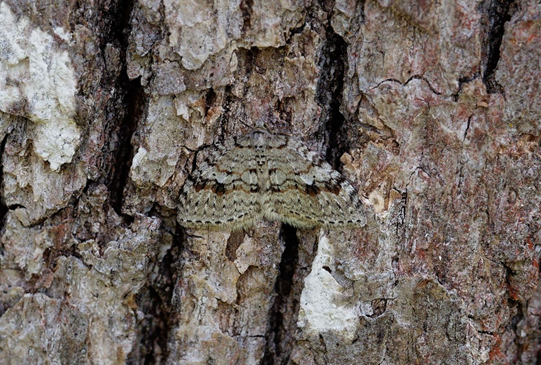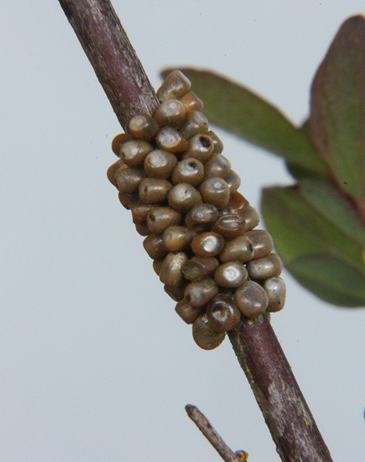April 4
2021 April 4
Jeremy Tatum writes: I saw a Mourning Cloak (my first ” non-Cabbage” of the year) this afternoon on Mount Tolmie – not on the reservoir, but in a little glade halfway down. Also there was a small moth settled on a tree-trunk. Just as I was wondering what it was, Gordon and Anne-Marie Hart appeared, and Gordon got a nice picture, which revealed that the moth was a pristine fresh Venusia. I had originally erroneously identified it as V. cambrica. I am very grateful to Libby Avis for pointing out my mistake. In cambrica the little dashes along the outer margin are triangular in shape; in Gordon’s moth, they are all straight hyphens. Besides, it is too early in the season for cambrica. See also April 15, where I made the same mistake with another individual. Gordon’s moth is either V. pearsalli or P. obsoleta. Neither Libby nor I have ever been able to distinguish reliably between these two species. Perhaps they are really a single species.
Also on Mount Tolmie was a batch of Sheep Moth eggs around a twig of Snowberry. Some have holes in them, probably as a result of a parasitoid, and some are collapsed. We’ll have to wait and see if any caterpillars hatch from the remainder. This moth has a long life-history. The eggs will have been laid last year, and they spent the winter in this form. The caterpillars will pupate late in the summer, and a second winter will be spent, this time as pupae, so the adult moths won’t emerge until nearly two years after the eggs were laid.


Venusia pearsalli/obsoleta (Lep.: Geometridae) Gordon Hart


Sheep Moth Hemileuca eglanterina (Lep.: Saturniidae) Jeremy Tatum
